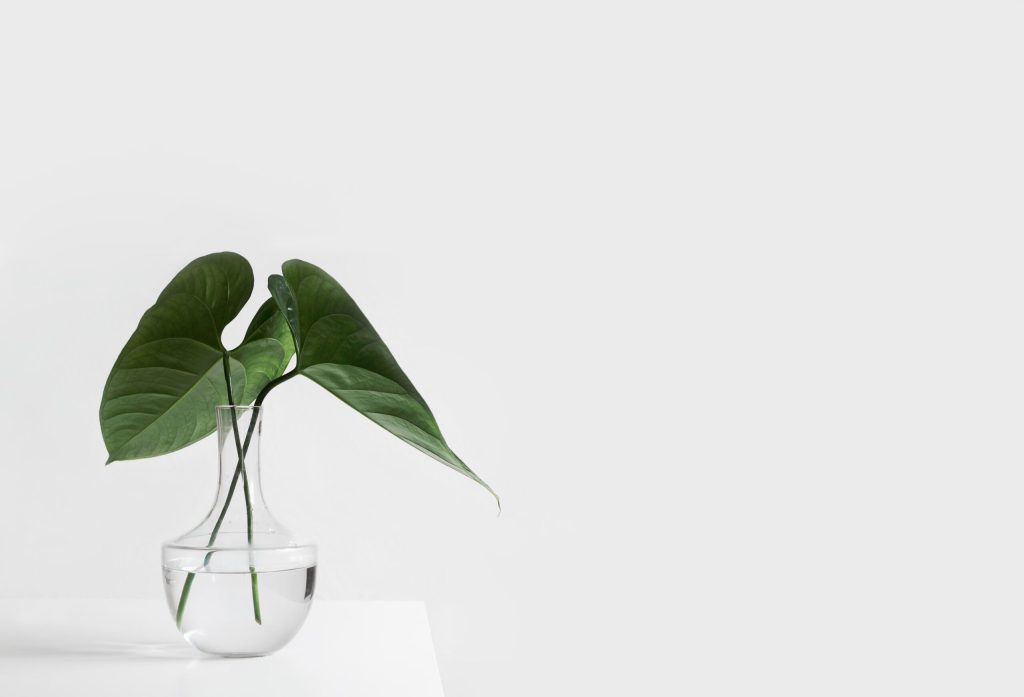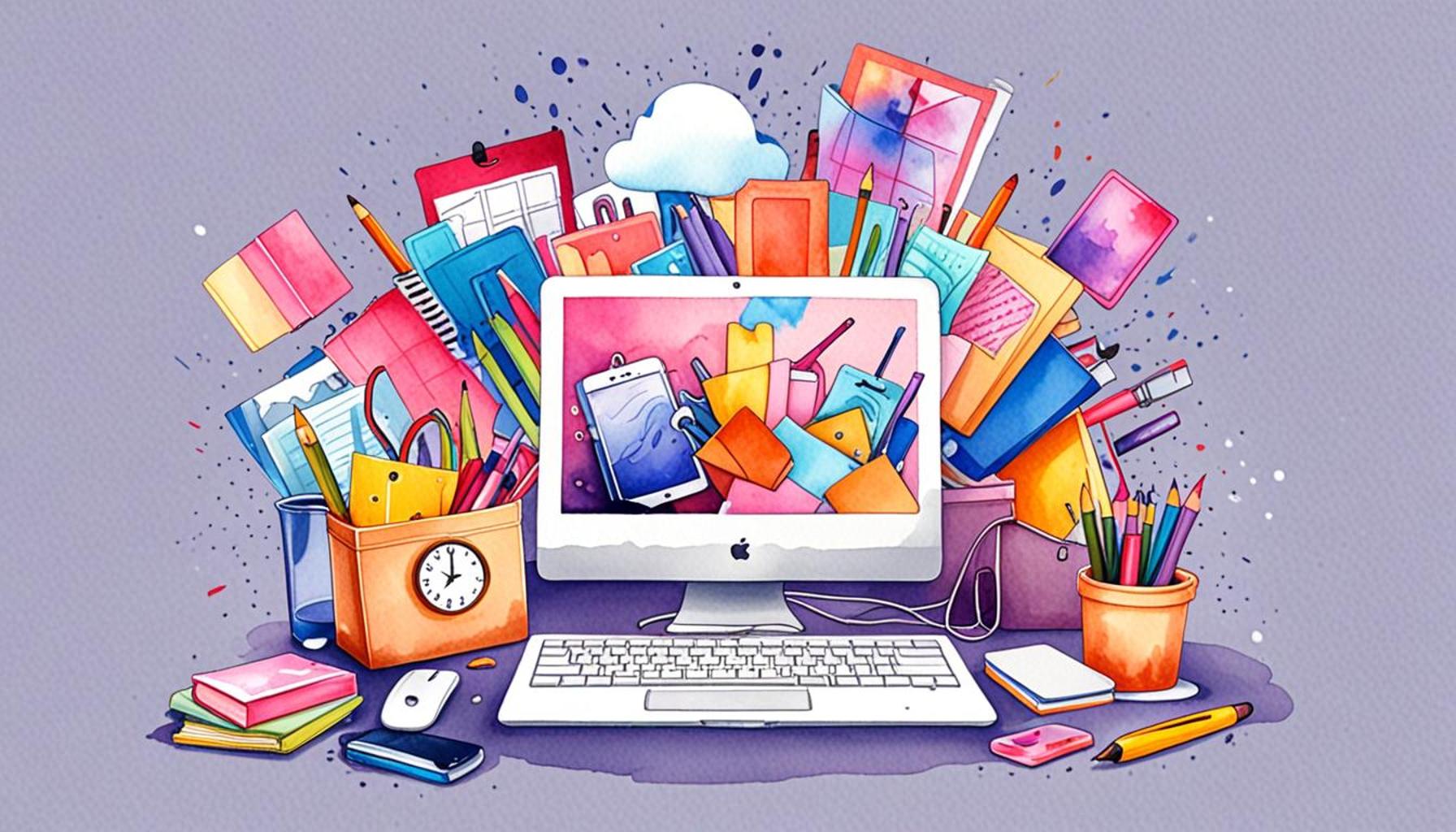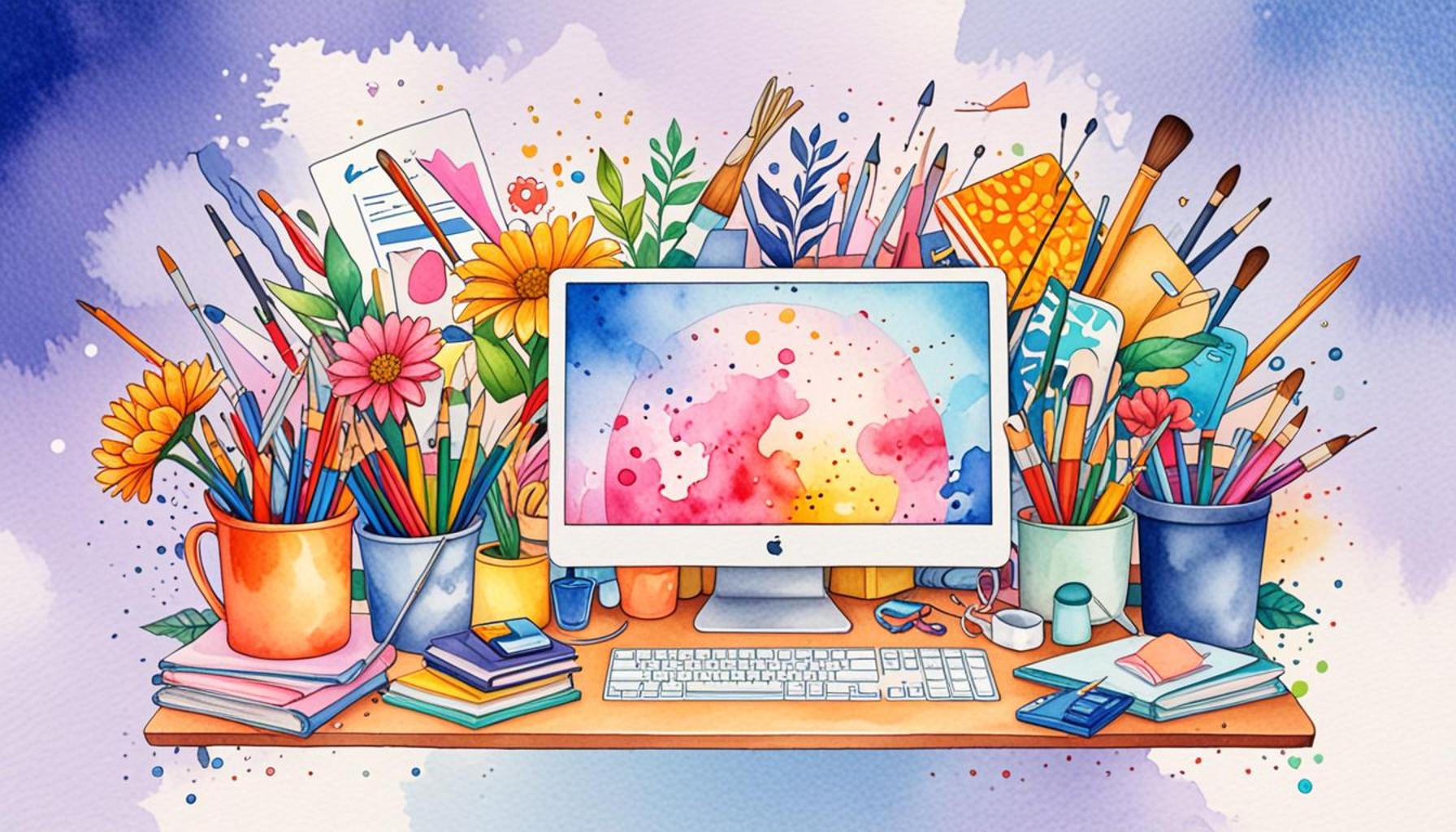The Role of Digital Consciousness in the Practice of Minimalism

Understanding Digital Consciousness in a Technologically Driven World
In an era where technology permeates every aspect of our lives, the relationship between digital consciousness and minimalism presents a compelling narrative. Minimalism has transitioned from a niche lifestyle choice into a broader cultural movement that challenges the norms of consumerism. The interplay between becoming more aware of our digital habits and embracing minimalistic principles is increasingly relevant as we seek to lead more intentional lives.
To begin with, digital consciousness highlights our awareness and intentional usage of digital tools. This concept is crucial in navigating the overwhelming technological landscape we encounter daily. The following elements illustrate its significance:
- Connectivity: In today’s world, being constantly connected often leads to a paradox of choice. While digital devices offer opportunities for networking and learning, they also introduce distractions that can impede personal focus and productivity. For instance, social media notifications can divert attention from important tasks, leading to a fragmented state of mind.
- Information Overload: The Internet serves as an immense reservoir of information. However, this plethora of data can overwhelm individuals. Critical discernment is essential; knowing which information to consume affects our mental well-being and overall productivity. For example, applying criteria to filter content—such as relevance and personal interest—can greatly enhance the quality of one’s digital interactions.
- Mindful Consumption: To align with minimalistic ideals, individuals are turning towards more intentional digital practices. This includes consciously selecting the apps, platforms, and information sources that resonate with their values, thereby fostering a more meaningful online experience.
In the United States, a rising number of people are adopting minimalism as a comprehensive lifestyle rather than merely a strategy for decluttering physical space. By marrying minimalism with digital consciousness, individuals can:
- Streamline their online presence: This may involve deleting unused accounts or unsubscribing from unnecessary emails, resulting in a more focused and manageable digital footprint.
- Reduce clutter in both physical and digital spaces: When combined, physical and digital decluttering lead to enhanced mental clarity. For instance, cultivating a clean workspace helps maintain concentration, while also encouraging a more efficient digital organization system.
- Enhance focus and productivity by limiting distractions: Setting boundaries around digital consumption, such as scheduling ‘screen-free’ hours, encourages deeper engagement with both work and personal relationships.
Exploring digital consciousness in relation to minimalism opens up a vital discourse regarding intentionality in our lives. It challenges individuals to reflect on their habits, not only regarding their material possessions but also within their digital interactions. The journey toward simplifying one’s existence can reveal profound insights into what truly matters. In the following sections, we will delve deeper into this fascinating intersection, providing insights and practical tips that empower readers to align their digital practices with minimalistic values. Get ready to uncover how transforming your approach to technology can enhance your overall lifestyle, creating a balanced and fulfilling existence.
DIVE DEEPER: Click here to discover how digital decluttering can boost your productivity

Embracing Digital Minimalism: Crafting Intentional Online Experiences
As we dive deeper into the intersection of digital consciousness and minimalism, it is essential to understand how our online behaviors can influence our physical and mental states. The pursuit of a minimalistic lifestyle calls for a conscious effort to evaluate our relationships with both tangible and digital possessions. This evaluation extends beyond merely decluttering our physical surroundings; it invites us to reassess our digital lives as well.
One of the first steps towards embracing digital minimalism involves understanding the concept of curated consumption. Rather than passively absorbing content that floods our screens, we can actively choose what enters our digital spaces. This customization creates opportunities for deeper connections to content that genuinely resonates with us, such as:
- Quality over Quantity: Prioritizing well-crafted and insightful content helps reduce the noise of information overload. Following only a select number of influencers or thought leaders who align with your values can lead to more meaningful interactions.
- Detoxing from Distracting Apps: Identifying digital tools that cause procrastination or emotional distress is crucial. Deleting apps that offer little benefit to your life can alleviate the temptation to scroll aimlessly and free up time for more fulfilling activities.
- Digital Journaling: Maintaining a virtual diary or planner allows for reflection on our digital habits. This practice encourages mindfulness and clarity about what content is truly enriching our lives.
The distinct challenges posed by the digital age require active reflection. Many individuals find their attention fragmented and their productivity compromised. According to a study by the Pew Research Center, approximately 56% of smartphone users feel they are ‘addicted’ to their devices, showcasing the extent to which technology influences our lives. Digital consciousness serves as a counterbalance to this pervasive influence by enabling individuals to reclaim their focus and agency.
By adopting a mindset geared towards intentionality, individuals can recalibrate their digital environments to reflect their ideals. The following are practical methods to bridge the gap between minimalism and digital consciousness:
- Implementing Digital Boundaries: Designating specific times for checking emails or social media creates healthier habits. Encouraging ‘tech-free’ moments, such as meals or family gatherings, fosters genuine connections with others.
- Organizing Devices and Files: Creating systems to categorize and prioritize digital files not only streamlines workflow but also promotes a neater digital space. Cloud storage and file organization tools can enhance access to essential documents while minimizing clutter.
- Engaging in Community Discussions: Joining forums or online groups focusing on minimalism can provide valuable insights and accountability. Sharing experiences with like-minded individuals can further inspire the commitment to a purposeful digital existence.
As we continue to navigate this fascinating terrain, the synergy between digital consciousness and minimalism becomes more apparent. The process of cultivating an intentional digital life is not merely an individual endeavor; it contributes to a larger cultural shift towards mindful living. By recognizing the role our digital presence plays in our overall well-being, we can embark on a journey that enhances both our physical and mental landscapes, ultimately leading to a more fulfilling life.
In the exploration of digital consciousness within the framework of minimalism, it is imperative to understand the critical interplay between technology and our consumption behaviors. As we navigate the digital landscape, we often find ourselves bombarded with an overwhelming influx of information. This phenomenon, referred to as *information overload*, becomes a significant barrier to practicing minimalism effectively. Digital consciousness advocates for a heightened awareness of our digital interactions, encouraging us to consciously curate our online experiences. By consciously choosing what to consume and engage with digitally, individuals can avoid the distractions that cloud their focus and clutter their mental space. This intentional engagement is aligned with minimalist principles, directing attention towards what truly matters and promoting a clearer mindset.Moreover, the concept of digi-minimalism emerges as a subculture within minimalism that acknowledges the necessity of technology but emphasizes simplifying its role in our lives. For instance, decluttering one’s digital life—such as organizing files, unsubscribing from unnecessary newsletters, and curating social media feeds—leads to increased productivity and reduced stress. This approach not only enhances our physical environment but also cultivates a more peaceful internal landscape.Social media, an integral part of contemporary digital consciousness, plays a dual role—serving as both a tool for connection and a source of distraction. The mindful use of social platforms can foster meaningful connections, while also encouraging individuals to disengage from the incessant scroll that often results in comparison and discontent. To this end, practitioners of minimalism harness the power of technology to connect with like-minded individuals who share similar values, creating a supportive community without the noise of superficial interactions.The balance between embracing digital tools and practicing minimalist principles sets the stage for a new philosophy—one that leverages technology to enhance our lives rather than detract from it. Engaging with digital consciousness allows individuals to navigate a world dense with stimuli while fostering a lifestyle centered around intentionality and simplicity. This discipline not only aligns with minimalist ideals but also cultivates a sustainable way to thrive in an increasingly complex digital era. The exploration of this synergy offers a rich vein of inquiry for those interested in reimagining their relationship with technology in a way that is harmonious, clear, and truly minimalist.
DISCOVER MORE: Click here to unlock the secrets of a timeless wardrobe
Cultivating a Mindful Ecosystem: The Power of Digital Detox
In the quest for minimalism, the importance of digital detox cannot be overstated. This practice encourages individuals to step away from their devices, allowing for clarity and rejuvenation while also drawing attention to how much mental space is consumed by our constant connectivity. According to a 2021 survey from the American Psychological Association, nearly 80% of respondents reported feeling overwhelmed by the sheer volume of information available online. Such statistics highlight an essential truth: the abundance of digital content can often lead to mental fatigue, hindering our ability to engage meaningfully with what we consume.
Employing a digital detox strategy involves more than just taking a break; it invites a conscious reassessment of our online habits and their impact on our well-being. Here are several actionable steps you can take to facilitate this process:
- Scheduled Disconnects: Allocating specific days or weekends for complete digital disconnection can serve as a lens through which we assess our reliance on technology. This time away encourages participants to explore hobbies, reconnect with nature, or engage in face-to-face conversations, resulting in a refreshing recalibration of priorities.
- Mindful Media Consumption: Rather than consuming media in a passive manner, establishing a routine that prioritizes engaging with content that educates, entertains, or inspires can aid in fostering deeper connections with the digital sphere. For example, revisiting classic literature or exploring documentaries can shift our consumption from superficial to substantial.
- Usage Analytics: Many apps now offer features that track screen time or usage habits. By reviewing these analytics, you can identify which applications are not only time-consuming but also emotionally draining. Understanding your digital footprint empowers you to make informed decisions about which platforms to retain and which to remove.
Moreover, engaging in a digital detox can promote an enhanced digital consciousness—the awareness of our digital habits and their implications for our mental health. The act of becoming conscious consumers of digital content highlights the significance of mindful engagement. For instance, platforms like Instagram and Twitter can often feed into a cycle of comparison and envy, as users internalize curated perfection from others. By approaching these platforms with a sense of awareness, individuals can actively engage in practices like gratitude journaling, where influencers and content creators are not seen merely as aspirational figures but as part of a broader community that enriches our lives.
The correlation between minimalism and digital consciousness is also reflected in the mindfulness trend gaining momentum across the United States. Practices such as meditation apps and mindfulness workshops emphasize cultivating awareness of our internal and external environments. By fostering mindfulness, individuals can better approach their digital interactions with intention rather than reflex, leading to more enriching interactions online.
Additionally, incorporating less technology into our daily rituals can create opportunities for personal reflection. Consider household routines such as tech-free evenings focused on engaging activities like board games, cooking, or reading. Not only does this strengthen relationships, but it also reinforces the value of presence over constant digital engagement. Such shifts not only validate our minimalistic goals, but they also nurture a holistic lifestyle that values mental and emotional well-being.
The integration of digital consciousness into minimalism invites an ongoing dialogue about how best to navigate our digital lives while preserving intentionality and simplicity—a conversation that grows increasingly relevant in today’s hyper-connected world.
DIVE DEEPER: Click here to discover more
Conclusion
As we traverse an increasingly digital landscape, the synergy between digital consciousness and minimalism becomes paramount. This relationship not only underscores the importance of intentionality in our online interactions but also emphasizes the need for ongoing reassessment of our digital habits. By integrating practices like digital detox strategies, mindful media consumption, and periodic disconnects, we create a buffer against the overwhelming tide of information that can cloud our mental clarity.
Moreover, developing a digital consciousness encourages individuals to question not just what they consume digitally, but how it impacts their overall well-being. With studies indicating that excessive digital engagement can lead to mental fatigue, fostering awareness becomes a vital tool in reclaiming our time, enhancing our focus, and enriching our lives. The simple act of prioritizing quality content over quantity enables us to transition from passive recipients of information to discerning, engaged participants.
Furthermore, this journey towards minimalism through digital consciousness invites us to foster real-world connections, tap into hobbies, and enhance our emotional health—all contributing to a more fulfilling lifestyle. By aligning our digital practices with the minimalist ethos of simplicity and intentionality, we open the door to a healthier balance between our digital presence and authentic life experiences.
Ultimately, the evolution of our understanding of digital consciousness as part of minimalism serves as a call to action—to live deliberately, embrace simplicity, and prioritize the essential in an era overflowing with both content and distractions. This journey is not just about minimalism; it is a path towards a more meaningful and mindful existence.


